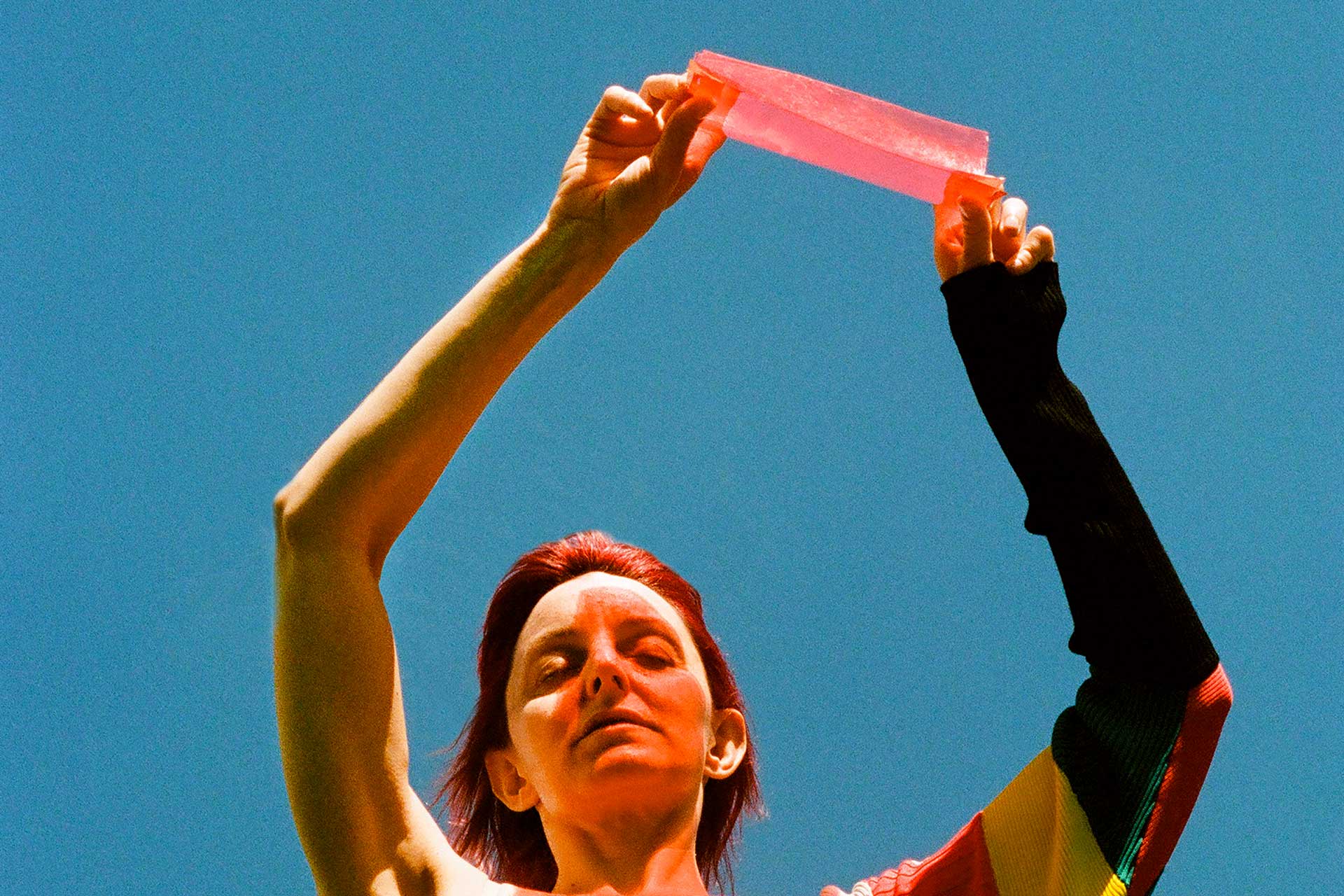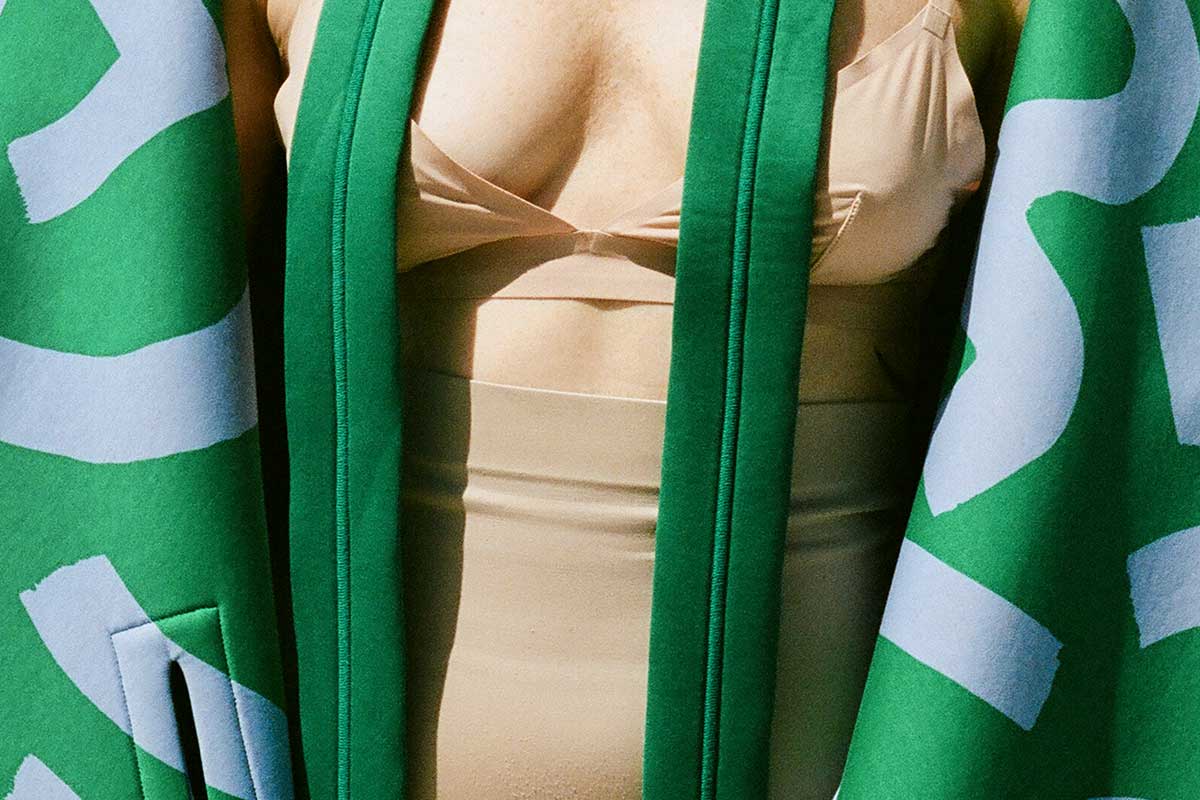A reflection on roles, context has become fluid and unlimited – Gabriele Rosati. «If home brings family, then family could also be a place where one feels at home»
Gabriele Rosati, Madre di me: a reflection that exploded during quarantine
The camera is a mirror, reflecting both the person being photographed and the photographer. «I don’t like to approach models, but people. I try to create a bond with them that is more human than professional. I try to insert myself inside their stories, their behavior and their body language through photography. I pay attention to what they are doing, especially when they don’t have the room in front of them: when they are drinking or on the phone, looking at the ceiling or waiting. In that moment, I feel the greatest truth that those people are giving me and it is the truth in which I can reflect myself. They are real movements, attitudes, positions. I use the body of the other as a medium, as in sculpture you shape the touch of clay: I fret it, I position it, I block it, I dress it. Just as I employ the person in front of me to communicate, they also communicate through me, at the same time».
In this act of mutual exchange, «I prefer to be alone, at most with a third person between me and the subject. I have had experiences in which, in retrospect, I realized that the presence of others on the set (a presence that is also distracted, someone who assists by looking at their smartphone) cooled the atmosphere and I was less able to build the connection I seek with those I photograph». Madre di me is the title of the shooting that Gabriele Rosati has made for Lampoon, the Commitment issue. At the time of shooting it, only two people were present on the set: Rosati and his subject.
«Madre di me was born from a reflection that exploded at home during quarantine, spent with my parents, after a long time that, for study reasons, I lived far from them. I wondered how my parents’ perception of me had changed after missing out on sharing the daily grind for so long. I realized how I had viewed my mom’s role in a traditional way and how the concept of role in society can be a prison. The concept of family today is vulnerable and fluid that my mom could be someone outside the family unit: a friend, for example. If home brings family, then family could also be a place where one feels at home. Paradoxically, a bench could be my mom. There is an intrinsic message to the title: me can be anyone; mother can be anyone. It’s like two containers that everyone can fill based on their own experience».
The pronoun ‘me’ marks a disconnect from the word ‘Mother’
The pronoun ‘me’ marks a disconnect from the word ‘Mother’. It is not about the birth that occurs with childbirth, but the second birth that happens when we decide who to become and find a guide capable of leading us towards the realization of our true being. In the elaboration of the photographic narrative, Rosati asked himself, «In truth, who do I feel is my mother at this moment in my life? In answering, I identified a mother who is not biological, but ideological».
The woman portrayed, the mother, is her sister Marianna: «A light and source of confidence, even in confusing moments. She chose my name. She gave me the name I bear». The first part of the visual path portrays her as she rotates on herself and in relation to her brother, with respect to an initial position. In the rotating movement, «I recompose the role of my sister, with my memories, with my experiences, until the image in which she is naked and seems to say ‘I am here’. It’s a dualism between the perception I have of her and the perception she has of herself, while she is immortalized by me».
The second part, in which the fashion aspect emerges and predominates, portrays her on top of a bench, lying on a chair or captured from below as she seems suspended in the sky. «These are visual contrivances that talk about her, her surreal approach to the environment».
Gabriele Rosati in Massarella, Tuscany
Rosati’s story is one of decisive encounters, starting in Massarella. «When people ask me where I’m from, I never answer ‘Florence,’ or in general ‘Tuscany.’ I answer ‘Massarella,’ because I’m proud of it». Massarella is a country hill, a town near Florence where 800 residents live. «Even with the limitations that such a small place can have, I am attached to it. My professor, Angelo Antonio Barbaro, an outspoken and inspiring man, in the two hours a week dedicated to Art Education, made me discover Modigliani». When Rosati begins to look at and read the reality «of Amedeo» he falls in love.
Nothing is the same as before: «It was a ‘call to action’ for me». The meeting with Barbaro, the ideological encounter with Modigliani and, later, with Egon Schiele, make him decide that in life, when he grows up, he will do something similar to them.
«Portrait of Jeanne Hébuterne. I struggle to describe it. The opening of the eyes, almost like Lucio Fontana’s cut. The eyes delineate a person’s identity, their emotionality. Modigliani didn’t paint the eyes, he didn’t give a precise identity. By omitting the eyes, his subjects become almost white canvases. At the same time, they have a semiotic charge because you know who they are and you know who they were for him. This relationship between personal and universal completely disarmed me when I stood in front of the painting, in Paris».
Rosati childhood in Empoli, Tuscany and his moving to Florence
Rosati’s growth continues at Empoli, where he studies applied arts. «It was a turning point. I understood the volumes of bodies and objects. I discovered matter and three-dimensionality, which I also transmit, perhaps on an unconscious level, to my images». Later, he moved to Florence where for a year and a half he dedicated himself to learning the photographic technique.
The choice of expressive medium comes into focus in response to the question, «What further discipline can I include in my academic background? I had a background as a manual artist and wanted to apply it to the two-dimensional field, namely photography. Initially, it was an experiment, almost to see what would happen».
The education in matter borrowed from painting and sculpture influences his approach to photography: «I tend to work very physically, with my hands. I shoot in analog because I have a form of dislike for digital. If I have to work digitally, in post-production I treat the image in a manual way, trying to add materiality: I scan, paste, apply papers and materials that give a body, I try different types of printing. I can relate better to the analogue, perceiving the material surface. I can already see that there is a fabric, an original texture on the image». Light is also considered the agent that brings out the structure of the things on which it rests: «Whether it is cutting, Caravaggesque, analytical, hospital: I like the grain that light creates on the skin of a body or on a garment».
Art direction at Polimoda – Gabriele Rosati
The last step of Rosati’s training was still in Florence: «At Polimoda I found my way with the Art Direction course. It is the field in which I am able to synthesize all of my tools: photography, painting, installation, sculpture».The first project realized at Polimoda is an investigation into one’s wardrobe, as a metaphor for identity.
Analyzing his own clothing, Rosati finds a connection with his grandfather: «I discovered how a phrase my grandmother used to say to him became a whole project for me: ‘Your shirt is buttoned wrong’. I developed my research on this detail, the badly buttoned shirt creates an ‘other’ perception of such a simple garment. Today I am interested in another aspect: the body as a structure underneath the garment. The skin is the first layer of the human body which is then covered by other layers. I’m interested in how the garment, an outer layer, covers the primary layer, which is the skin. I’m more attracted to the covering than the uncovering of the body».
Nan Goldin and David Lynch atmosphere
Among contemporary photographers, Rosati appreciates Nan Goldin, «with whom I would gladly go for a drink in a place with a ‘David Lynch’ atmosphere». Of Viviane Sassen, he loves the play of light she creates using jellies: «We would go to Ghana and play all afternoon photographing those colors of carnations, the white chairs on the red earth, the blue plastic».
Among his references, there is also Paul Mpagi Sepuya, «a photographer-artist who lends himself to the world of fashion and who, in recent years, has worked with Wales Bonner and Helmut Lang. In the same photograph he manages to create several levels of narration, stories within stories. He subverts contexts, creating new ones. In his shots there is disorder, the ‘almost’ left to chance».
Gabriele Rosati
Gabriele is a young Italian photographer and artist who focuses his work on the ‘language of the body’, exploring in this way people’s feelings and their existence. In his black and white images we can find an honest raw style infused with spontaneity and youth that transports us to our essence and makes us reflect about our paths in this life.
Photography Gabriele Rosati, model Marianna Rosati



















